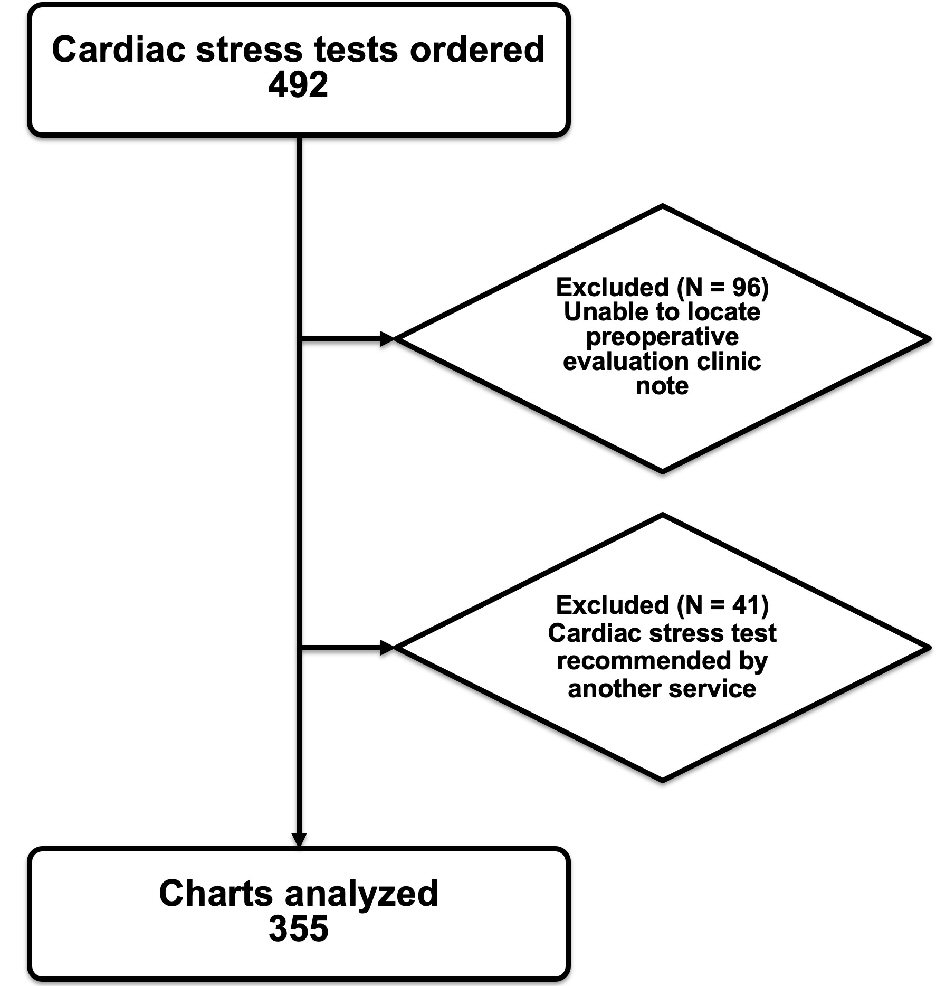
Figure 1. Cardiac stress tests ordered exclusion flow diagram (flow diagram of the charts analyzed and excluded).
| Cardiology Research, ISSN 1923-2829 print, 1923-2837 online, Open Access |
| Article copyright, the authors; Journal compilation copyright, Cardiol Res and Elmer Press Inc |
| Journal website http://www.cardiologyres.org |
Original Article
Volume 10, Number 1, February 2019, pages 1-8
Preoperative Cardiac Stress Tests Ordered in the Preoperative Evaluation Clinic: A Retrospective Review of Ordering Patterns
Figure

Tables
| Shown is the list of institutional specific guidelines at Brigham and Women’s Hospital for ordering preoperative electrocardiograms. These supplement the American College of Cardiology/American Heart Association Guidelines on Perioperative Cardiovascular Evaluation and Management of Patients Undergoing Noncardiac Surgery. AICD: automatic implantable cardioverter-defibrillator; RCRI: revised cardiac risk index. |
| Any patient over the age of 65 (updated in June 2015, previously age 50) |
| Any patient with a known arrhythmia |
| Any patient with a suspected arrhythmia by history regardless of age |
| Any patient with an AICD or pacemaker regardless of age |
| Any patient with known significant cardiac history regardless of RCRI or age |
| Cardiac stress ordered by indication | Number | Percent of total |
|---|---|---|
| Breakdown of indications for order of cardiac stress tests ordered. “Percent of total” column represents the percent of cardiac stress tests in that category (row) of all cardiac stress tests ordered. ECG: electrocardiogram. | ||
| Societal guidelines | 153 | 43% (153/355) |
| Societal guidelines: ECG | 101 | 28% (101/355) |
| Societal guidelines: algorithm | 52 | 15% (52/355) |
| Institutional guidelines | 104 | 29% (104/355) |
| Other | 98 | 28% (98/355) |
| Charts analyzed | 355 | 100% (355/355) |
| Cardiac stress tests categorized as “Other” | Number | Percent of “Other” cardiac stress tests | Number peer review agreed | Percent peer review agreed |
|---|---|---|---|---|
| Breakdown of cardiac stress tests categorized as “Other”. “Percent of “Other” cardiac stress Tests” column represents the percent of cardiac stress tests in that category (row) of cardiac stress tests categorized as “Other”. “Number peer review agreed” column represents the number of cardiac stress tests of that type of indication for order (row) that by peer review was agreed upon as appropriate. “Percent peer review agreed” column represents the percent of cardiac stress tests of that type of indication for order (row) that by peer review was agreed upon as appropriate. METS: metabolic equivalents; echo: echocardiogram; bpm: beats per minute. | ||||
| History of chest pain | 64 | 64% (64/98) | 38 | 60% (38/64) |
| Low METS (< 4), but did not meet societal guidelines | 14 | 14% (14/98) | 4 | 29% (4/14) |
| History of abnormal stress test | 5 | 5% (5/98) | 4 | 80% (4/5) |
| Clinical history warranted electrocardiogram which required further investigation with cardiac stress test | 3 | 3% (3/98) | 3 | 100% (3/3) |
| History of aortic stenosis and coronary artery disease | 2 | 2% (2/98) | 0 | 0% (0/2) |
| History of significant coronary artery disease | 2 | 2% (2/98) | 0 | 0% (0/2) |
| History of intraoperative ST changes | 2 | 2% (2/98) | 1 | 50% (1/2) |
| History of low ejection fraction echocardiogram | 1 | 1% (1/98) | 1 | 100% (1/1) |
| History of pre-syncope | 1 | 1% (1/98) | 0 | 0% (0/1) |
| History of postoperative ST changes | 1 | 1% (1/98) | 0 | 0% (0/1) |
| History of stress echo and beta blocker for unknown reason (but unable to obtain stress echo report) | 1 | 1% (1/98) | 0 | 0% (0/1) |
| Increasing dyspnea (but METS ≥ 4) | 1 | 1% (1/98) | 1 | 100% (1/1) |
| Status post cardiac transplant | 1 | 1% (1/98) | 0 | 0% (0/1) |
| Sinus bradycardia (heart rate 40 bpm) | 1 | 1% (1/98) | 0 | 0% (0/1) |
| Total | 98 | 100% (98/98) | 52 | 53% (52/98) |
| Number | Percentage of proper ordering | |
|---|---|---|
| Shown is the analysis of the ordering of different types of cardiac stress tests, specifically pharmacological vasodilator cardiac stress tests and exercise ECG stress tests. LBBB: left bundle branch block; RV: right ventricle; ECG: electrocardiogram. | ||
| Patients with LBBB or RV pacing with any type of stress test ordered | 51 | 41% (21/51) |
| Patients with LBBB or RV pacing with pharmacological vasodilator stress test ordered | 21 | |
| Exercise ECG stress tests ordered | 64 | 58% (37/64) |
| Exercise ECG stress tests ordered with normal resting baseline ECG | 37 | |